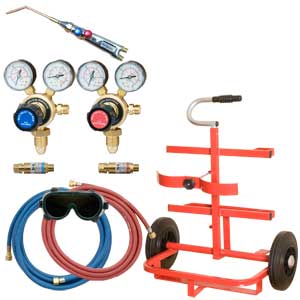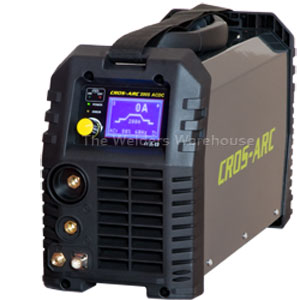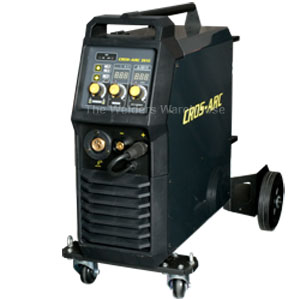01908 6998020845 899 4400 | 01908 699802Tel 01908 699802
Welding Aluminium


Welding Aluminium has often been seen as a bit of a dark art that’s the preserve of the seasoned professional welder. But is that still the case?
Welding Aluminium is certainly not as straightforward as welding materials like Mild Steel and Stainless Steel, but modern methods and equipment are making the welding of Aluminium less difficult (note I didn’t say easy 🙂
So why is welding aluminium more difficult than other common metals?
Aluminium Properties
Aluminium has an oxide layer on its surface. This oxide layer forms pretty much instantly, so even if you abrade the surface with sandpaper, it reforms before you have a chance to weld.
So a piece of Aluminium can be loosely described as Aluminium, sandwiched between layers of Aluminium Oxide.
Aluminium oxide melts at over 1000⁰C.
Aluminium melts at around 660⁰C.
So here’s the problem when we come to weld your Aluminium melts
- You apply your flame or arc and the job starts to heat up.
- At 660⁰C the Aluminium melts, but you won’t yet have a weld pool because the Aluminium Oxide layer is still in place.
- At a bit over 1000⁰C the Oxide layer melts, but by now the Aluminium is 350⁰C+ ABOVE its melting temperature and so highly fluid and only being held in check by the Oxide layers.
- When the Oxide layers melt, the super melted Aluminium is released and the whole lot falls on the floor, leaving a great big hole!
The solution to the Oxide problem when welding Aluminium depends on the welding process being used.
Gas Welding Aluminium
This involves using a Flux to break down the Aluminium Oxide and prevent it from reforming during the welding process.
Oxy/Acetylene equipment needs to be used (not Oxy/Propane or Propylene).

Apart from the use of a flux, Gas Welding Aluminium is much the same in technique terms as Gas Welding Mild Steel. The only real difference is the margin for error, which is almost non existent!
So Gas Welding Aluminium should only really be considered by those with plenty of experience of Gas Welding Steel and a deft hand. But its do-able!!!
If you don’t already have Gas Welding Equipment, we have quite a large range of options for Oxy Acetylene
Tig Welding Aluminium
Tig Welding is the most popular of the processes for Welding Aluminium and is arguably the least difficult.
It’s important to note that Tig Welders fall into two basic categories, those with a Direct Current (DC) output and those with a Direct Current (DC) and Alternating Current (AC) output, generally know as AC/DC Tig Welders.

As I’ve already stated, Welding Aluminium requires an AC output, so an AC/DC Tig Welder is what’s needed. We have some separate info about Tig Welders or you can take a look at our range of Tig Welders
Mig Welding Aluminium
Mig can also be used for Welding Aluminium, although the type of Mig Welder you have will be a big factor in how successful you may be.
It’s important to have a Teflon, or Plastic Torch Liner as a steel liner will scrape particles off the surface of the Aluminium Wire, which will quickly cause the wire to jam up in the liner. Ideally, you should also have a ‘U’ shaped feed roller. Most machines are supplied with a ‘V’ shape. You can get away with a ‘V’ shape, but ‘U’ shape will aid reliable feeding.
Pure Argon gas is important, an Argon/Co2 mix will make Welding Aluminium more difficult and may result in poorer weld strength.
Small DIY type machines can be used for Welding Aluminium, but it may be a bit of a challenge as Aluminium requires significantly higher power than steel, so expect Aluminium thickness to be limited to around half the thickness that you machine is capable of in steel.
A good middle of the road option is a machine with at least 200 amps output and a Euro Fitting Torch. Such a machine should have ample power and a Euro type Torch allows a Teflon Liner to be fitted in a couple of minutes.

The best type of Mig Welder for welding Aluminium is a Synergic unit that has a dedicated Aluminium program, but these tend to be VERY expensive and therefore more the preserve of businesses with a large scale need for welding Aluminium.
If you don’t already own one, take a look at our range of Mig Welders
In Conclusion
In my opinion, an AC/DC Tig Welder is the best option for most operators wishing to weld Aluminium. AC/DC Tig Welders have come down a lot in price over recent Years and the process is not to intimidating to get the hang of. Having said that, it’s worth buying a machine from a reputable supplier that has good Technical Support available so you have someone to ask for tips along the way.
Gas Welding and Mig Welding Aluminium is also OK, but Gas Welding is, inn my opinion, more difficult and Mig, unless you have industrial equipment, does not produce great quality welds.
I guess the bottom line is it depends what you need to achieve and how much money you want to spend.
Need to Know More?
If you would like to know more, or would like to discuss what equipment might best suit your needs, please don’t hesitate to get in touch, you can write via our Contact Us page, or phone and ask for me! (numbers at the top of this page)
I hope you found this useful, if things work out well for you, please feel free to post some pictures of your achievements on our Facebook Page
Please let me know what you thought of this article by leaving a comment. Don’t worry, your email address won’t be added to a database or shared and you won’t receive any unsolicited email.
Cheers
Graham


It may be a silly comment but do you need flux when tig welding ali. Ive tried in the past but it just ends up melting before you get to start to weld.
Hi Rob
If you need to know, it’s not a silly question!
No, you don’t need flux to Tig Weld Aluminium, HOWEVER, you do need an AC (Alternating Current) output, this necessitates an AC/DC Tig Welder. Some Tig Wleders are DC (Direct Current) only, you cannot weld Aluminium with these. My bog article on Tig Welders may be worth a read for you.
Hope that helps
Cheers Graham
Awesome…Such a great information.Thanks and keep on sharing.
Thanks for posting this. I have been trying to read up on information about aluminum brazing, aluminum bonding, and soldering so this was very useful. I am looking to join copper and aluminum so any help is always appreciated.
Thanks for the comment Suraj, glad you found the article useful.
Cheers Graham
Great blog! Thank You for sharing information.I Personally Prefer Mig welding.
Thanks for the comment.
Kind regards
Graham
very informative article. i personally prefer Mig welding.
Thanks for the comment.
Graham
Hi,
I prefer TIG for welding aluminum also. although there are many applications that force you to use a different welding application.
Thanks for the Comment TNH
I would agree that in the vast majority of cases, Tig is the way to go for Welding Aluminium. However, not everyone can justify the cost if they only have the occasional small job, in which case, using Mig is potentially better than nothing.
Cheers
Graham
I prefer tig welding for aluminum, personally.
Thanks for the comment Adrienne.
I also prefer Tig for welding aluminium and it is the most versatile, but it depends on your application and what you’re seeking to achieve.
Cheers
Graham
This blog is an excellent source of information.